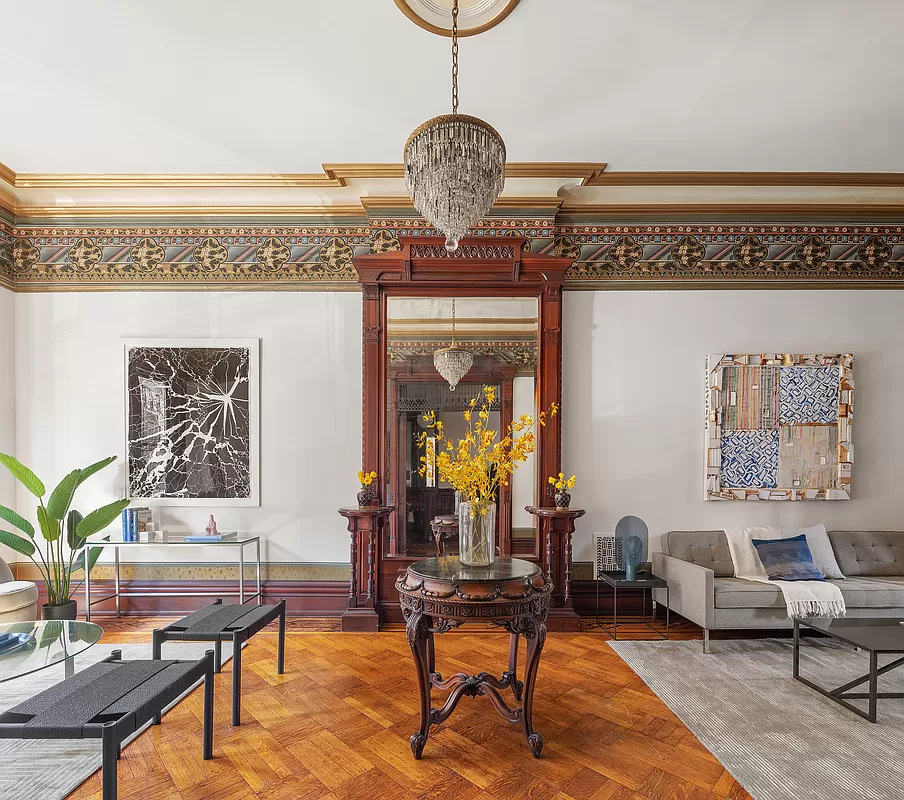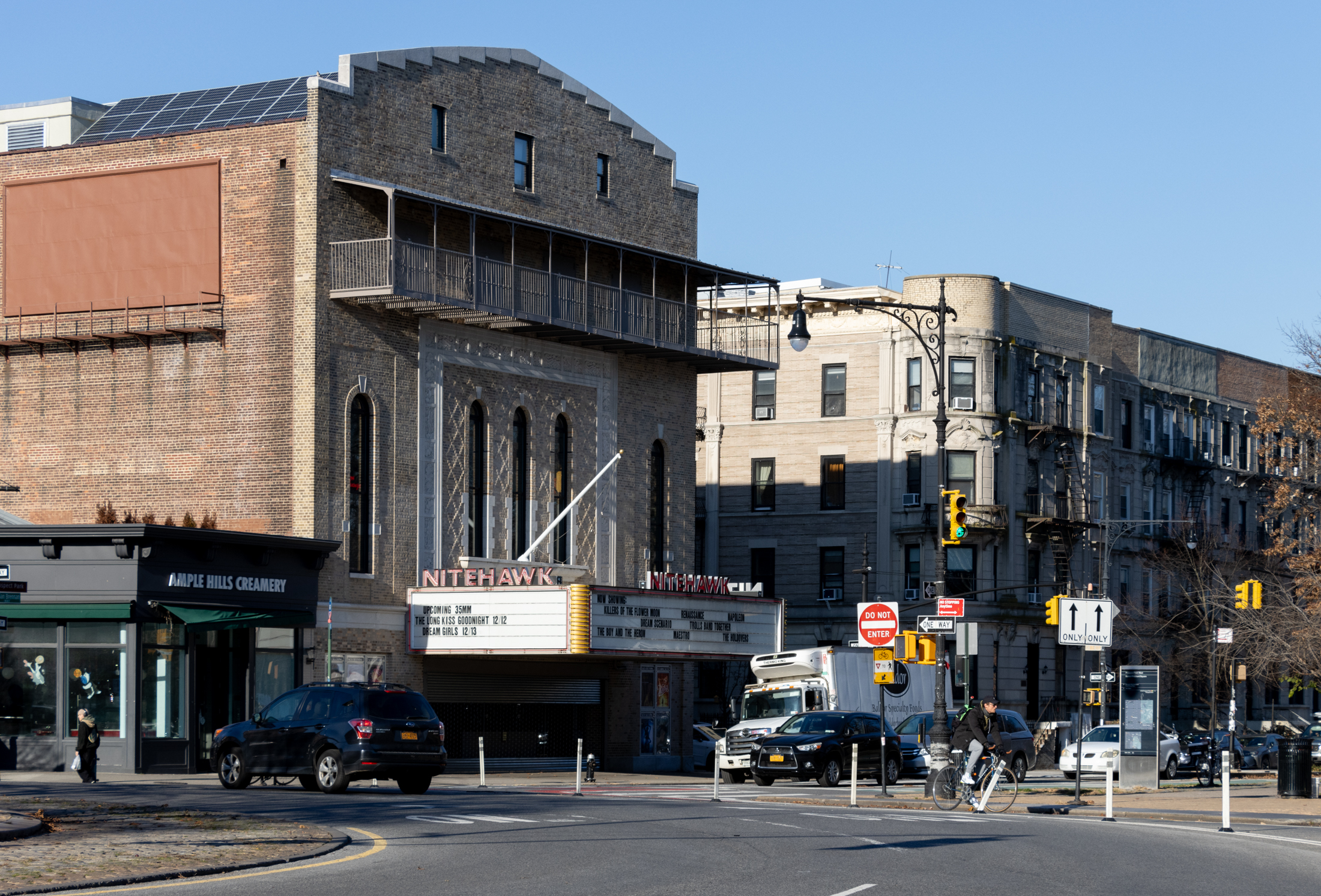Building of the Day: 140-146 5th Avenue
Brooklyn, one building at a time. Name: Retail/flats buildings Address: 140, 142, 146 5th Avenue Cross Streets: Douglass and Baltic Street Neighborhood: Park Slope Year Built: 1889 Architectural Style: Queen Anne Architect: I.D. Reynolds, built and owned by Owen Nolan. Other buildings by architect: Many buildings in Park Slope, Prospect Heights, Stuyvesant Heights and Bedford…

Brooklyn, one building at a time.
Name: Retail/flats buildings
Address: 140, 142, 146 5th Avenue
Cross Streets: Douglass and Baltic Street
Neighborhood: Park Slope
Year Built: 1889
Architectural Style: Queen Anne
Architect: I.D. Reynolds, built and owned by Owen Nolan.
Other buildings by architect: Many buildings in Park Slope, Prospect Heights, Stuyvesant Heights and Bedford Stuyvesant. Mostly rowhouses and flats buildings.
Landmarked: No, but part of proposed PS expansion district.
The story: What I like so much about Victorian architecture is the aesthetic of beauty. It’s what drew me to these buildings, and the whole field of preservation in the first place. Sure, the buildings served their intended purpose to shelter people, or contain businesses or houses of worship, or whatever their function, but in the process, the architect and/or the builder was always conscious of beauty, and that beauty still draws us in today. Take these three buildings. Built as three family tenement flats with commercial space on the ground floor, there was no need to make these beautiful. They were not the commissioned homes of the rich, or temples of commerce. They were built for regular folk, who would live above the shops that they probably frequented as customers. But these are gorgeous buildings, with beautiful decorative brick and terra-cotta work.
It shouldn’t be surprising, considering the architect. Isaac D. Reynolds was one of those Brooklyn architects who got no real accolades or publicity for his work, but if you live in Bedford Stuyvesant, Prospect Heights or Park Slope, chances are you pass his work every day. Also partnering with his son, Herbert, as I.D. Reynolds & Son, Mr. Reynolds delivered a large amount of very fine buildings to the catalog of superior Brooklyn architecture.
Isaac Reynolds worked from the 1860’s through at least 1905, and in those forty-plus years, designed in the Italianate, Neo-Grec, and Romanesque Revival/Queen Anne styles. His Neo-Grec brownstones with their signature incised ornamental patterns are among the best of the genre, appearing on MacDonough Street in Stuyvesant Hts, Arlington Place in Bed Stuy, and on Bergen Street, in Prospect Heights. Bed Stuy researcher Morgan Munsey has catalogued 77 Reynolds buildings in Bedford Corners alone, with many more waiting to be found. Here in Park Slope, he designed several other storefront/residential buildings, including 294-307 Seventh Avenue, as well as 593-601 10th Street.
I.D. Reynolds often worked literally next door to one of his contemporaries, Amzi Hill. Their styles could be so similar, it’s often hard to tell who did what. Both men excelled in decorative brickwork, such as on this group of buildings. One wonders what their relationship was, and who copied whom? There are only 4 19th century buildings left on this block.The last building, which is not part of this group being discussed, was once itself part of a group that took up the rest of the block, is an Amzi. They just couldn’t escape each other.
This group of buildings housed everyday folk who worked as laundresses, butchers, drivers, grocers and the like; the working classes. One resident of 142, the building in the middle, had a tragic end. Peter Brunn was a 35 year old butcher with a wife and three children, the youngest only 9 days old. On May 28, 1897, he left home, took the trolley out to Bergen Beach, and hanged himself. He was unidentified until it was discovered that his wife had run to the local police to report that he had left a note describing his intentions. But it was too late. Apparently, he had become despondent, was drinking heavily, and there may have been another woman. He left his family with no money, leaving them to be fed and helped out by friends and neighbors. His was but one of an epidemic of suicides during the months of May and June of 1897, when at least 36 people attempted or succeeded at suicide in May alone. Peter Brunn’s was the second to the last of the month. GMAP












These are non-descriptive tenements with some pre-cast detailing sprinkled through the brick. Essentially a fancy fedders of their day. They aren’t architectural masterpieces, they are just old (which is nice).
But praise thrust on these just prove to me that if we live long enough almost everything becomes ‘historic’ and ‘beautiful’
Its already started with Parkchester (essentially project architecture with some precast art)
http://forgotten-ny.com/2008/09/parkchesters-sculptures/
and I am sure eventually there will be a landmark fight about 396 Dean St:
http://bstoner.wpengine.com/blog/2011/09/396-dean-street-creation-on-the-market-for-2-85m/
“. Built as three family tenement flats with commercial space on the ground floor, there was no need to make these beautiful. ”
Mission accomplished
“. Built as three family tenement flats with commercial space on the ground floor, there was no need to make these beautiful. ”
Mission accomplished